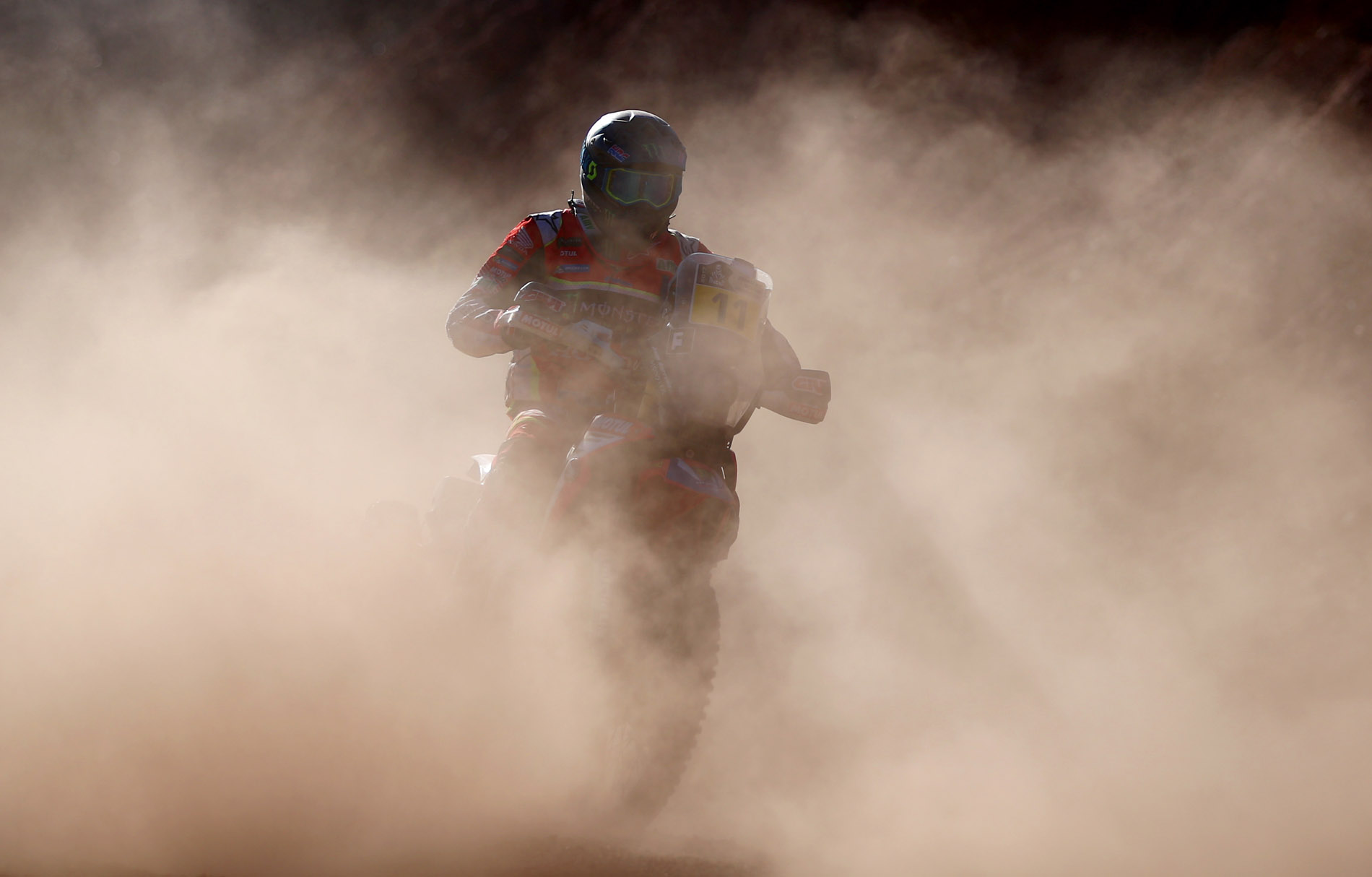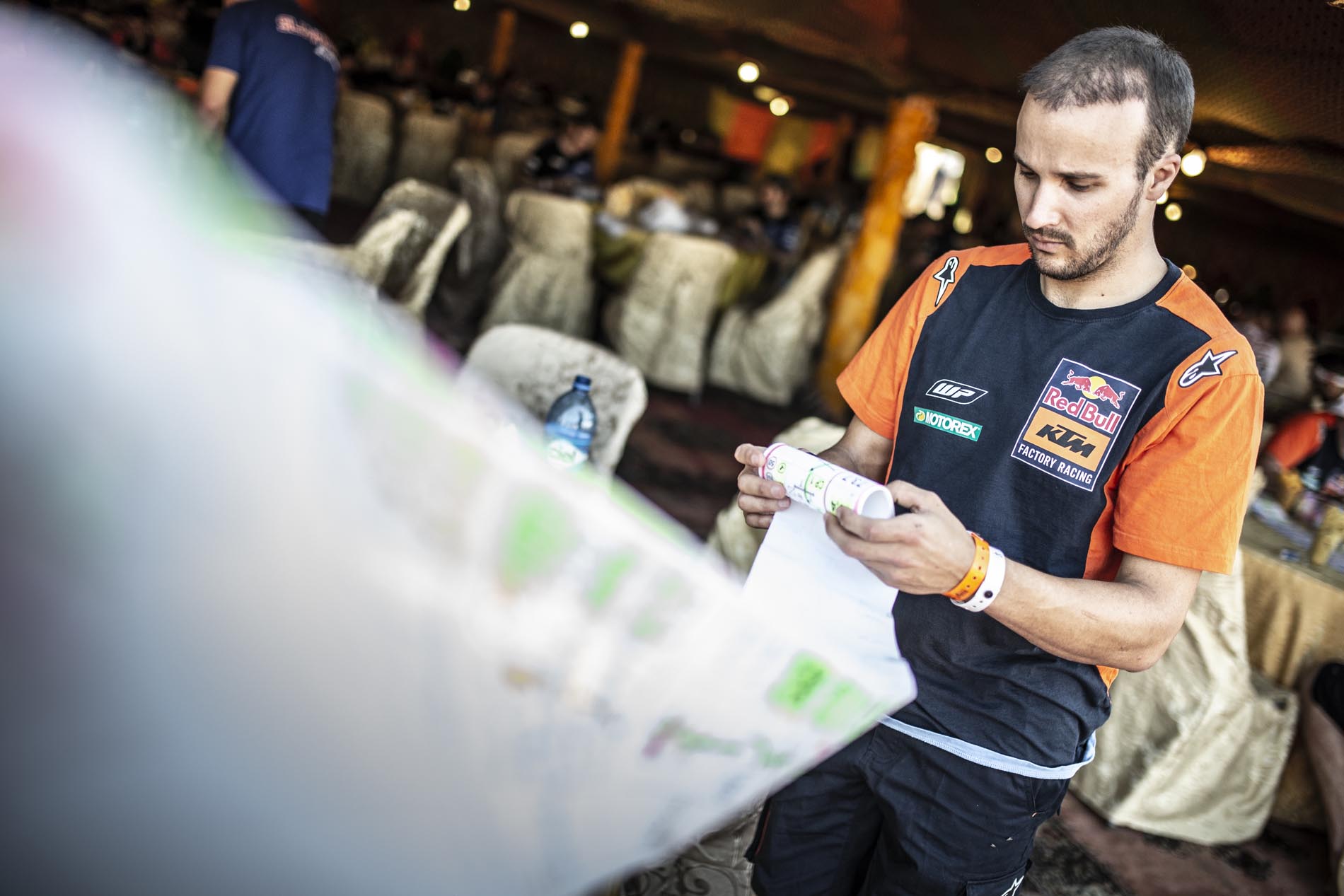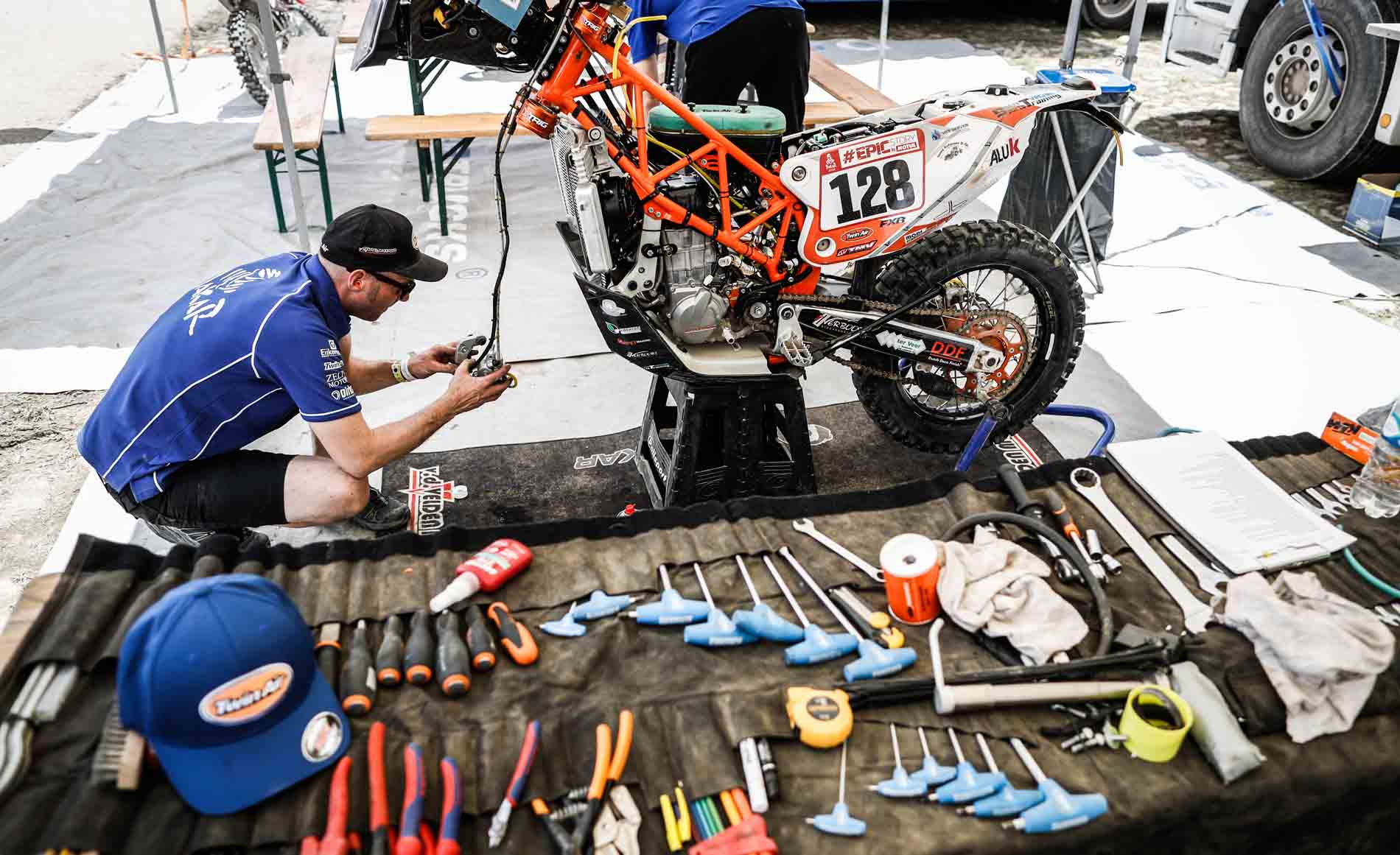Heinz Kinigadner has been at the start of the Dakar seven times. He is the legend right at the beginning of KTM’s successful story. Kinigadner is considered one of the most spectacular motorcycle riders in Dakar history – and one of the fastest. But the Dakar of our days is too fast, says Kinigadner. Way too fast: “The quality of the motorcycles and teams is extremely high. The quality of the riders is extremely high. This combination has brought the pace of the Dakar into a no longer healthy sphere. The riders today drive at incredible speed on a track whose peculiarities and danger spots they do not know.” For Kinigadner this is like Russian roulette, the risk is hard to control.
Deutsche Version dieses Artikels: “Wir müssen das Tempo bei der Dakar drosseln!”
Since 2015 Heinz Kinigadner tries to win allies to slow down the elite-class at the Dakar. Several other Dakar insiders have presented additional ideas. The initiative has received a very positive response, says Kinigadner: “I talked with Nani Roma and Stéphane Peterhansel, among others. Both former Dakar winners on the motorbike. Both say that it’s scary how risky the elite class appears at the moment. Some suggestions came from Marc Coma. At the UCI Road World Championships in Innsbruck I also talked to ASO CEO Yann Le Moenner. He understood my concerns and would have supported our suggestions.”

Above all, the proposals on the table should slow down the pace of the elite class. But they also would make the results less predictable. The adventure factor would again play a bigger role.
Ban on mousse in the rear tyre
Heinz Kinigadner: “If the riders were again restricted to a tube in the rear tyre, they would no longer speed up unconditionally on rocky terrain and in stony riverbeds. If one loses valuable time because he has to change a tube, then he for sure will not attack the next similar section as fiercely. They have to ride with caution and take care of their motorcycle.”
One brand standard tyres for all elite riders
“We need a standard tyre, coded and assembled by the manufacturer. That’s how we can make sure that there’s no cheating somewhere out on the track.”
No mechanics anymore
“Every rider is to service his own motorbike. Only the riders are allowed to work on their motorcycles at the Parc Ferme. Of course they can accept help from support riders. But there are time limits. And if on some occasions mechanics are allowed to work on the motorbike, then it is precisely defined when and for how long.”
Digital roadbook without long preparation
“In the long term the digital roadbook must be the goal. About ten minutes before the start, the riders get the roadbook with all coloured markings and drive off. The hours of preparation in the evening then are history. However, this recommendation is currently experiencing some resistance, especially among the car drivers.”
Speed-Limit
“The speed is limited at 155 km/h. At 150 km/h you hear a warning sound. If you ride faster than 155 you’ll get a time penalty.”
Less fuel stops
“This is a big concern for Marc Coma. That would lower the average speed. Longer distances between refueling make the race a bit more difficult for the competitors, but for the organization logistics are getting easier.”

About two months ago, the proposals of the group around Heinz Kinigadner were discussed together with the ASO and the large manufacturer teams. Among others Alexandre Kowalski (Yamaha), Ruben Faria (Honda), Pela Renet (Husqvarna) and Jordi Viladoms (KTM) sat at the table. It was a constructive conversation in which they could formulate some reforms for the elite class, which should have been implemented already at the Dakar 2019:
Yes to a one brand standard tyre. Mousse in the rear tyre should still be allowed this time. The teams agreed on the ‘Michelin Desert’. And they agreed to test the rear mousse ban at the ‘Merzouga Rally’ in march.
At this meeting the speed limit of 155 km/h was accepted.
All parties at the table also agreed to let the riders work on the bike more often without support by mechanics. Thus, at certain places a Parc Ferme should be set up. If the problem was too big to solve it alone, the rider should be allowed to return to the Parc Ferme and get the help of mechanics after the start of the next day. But with the racing clock running.
The teams also accepted the colour-coded roadbook, handed to the riders only shortly before the start of the stage. In a first step still printed on paper. The digital roadbook should be implemented later in cooperation with FIM.
Immediately after this meeting, he was more than satisfied, says Heinz Kinigadner: “These would have been really good first steps. Unfortunately, a few days later came a veto.”

The discussion is postponed. In the end one of the big teams rejected the agreement on the standard tyres in an e-mail a few days later. This longtime KTM competitor argues that they’ve been testing Pirelli tyres specifically for the short stages. And they do not want to renounce these testing experiences.
“I think that’s a bit weak”, says Heinz Kinigadner: “Especially with this Dakar, where the tyres are not really a big topic because of the large amount of sand. However, ASO then made a statement, that these changes will only be implemented if there is genuine consenus among the manufacturers. Since this is not the case, Dakar 2019 happens without any of the reforms we’ve discussed. This is disappointing because we urgently must slow down the elite riders. Moreover, these measures would certainly have made the Dakar more interesting and even more varied.”
But a beginning has been made. Some of the suggestions presented here will be tested together with ASO at the ‘Merzouga Rally’ and in collaboration with FIM at the ‘2019 Cross Country Rally World Championship’. Depending on the success, individual measures shall be introduced gradually. (c. panny, hubert lafer)
STORY: Deutsche Version dieses Artikels
STORY: Heinz Kinigadner & the Dakar (Dakar-Special from 2011)
photos (c) ASO, Eric Vargiolu & Dan Istitene, Getty Images & Marcin Kin & Florent Gooden